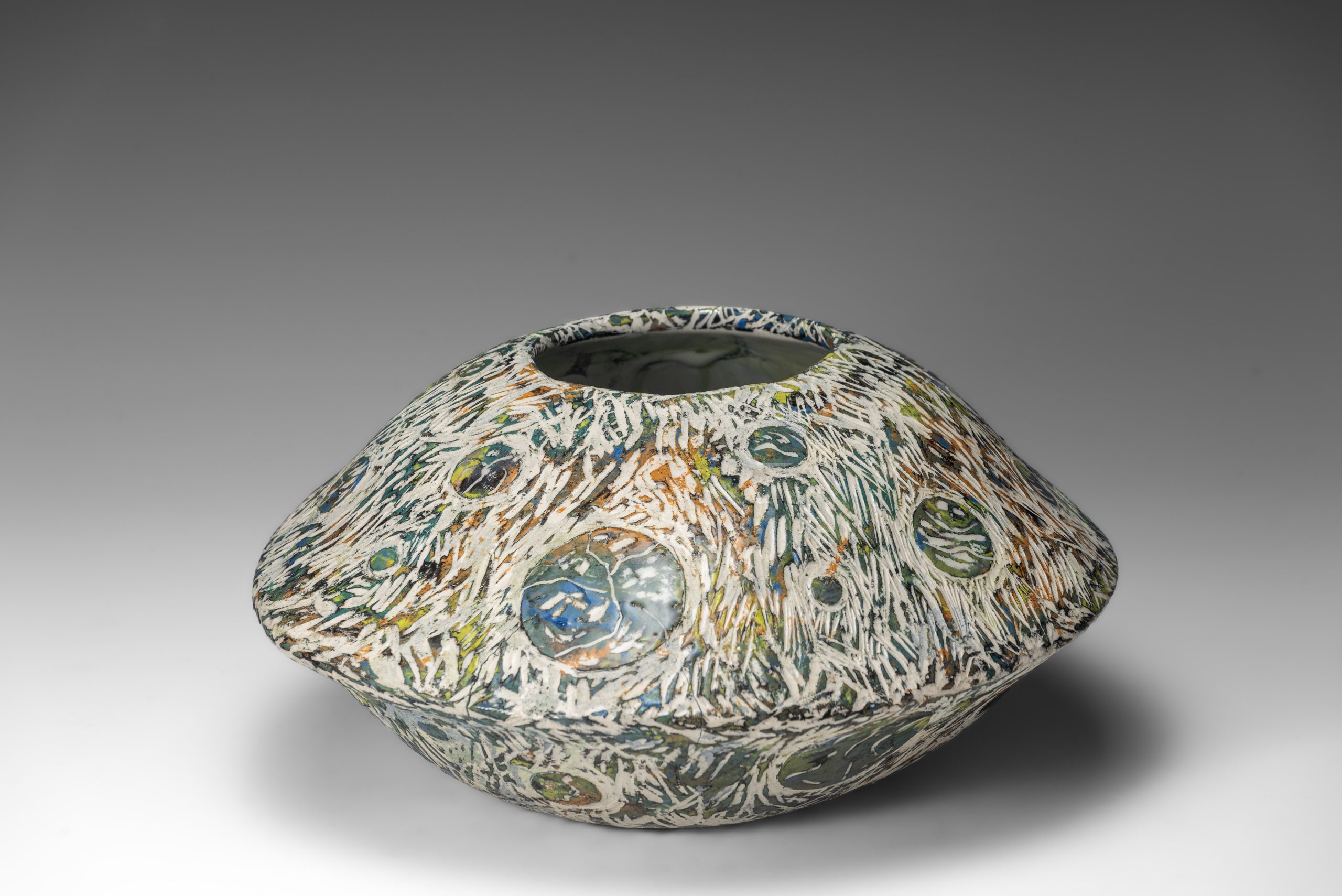In my practice explorations, which frequently draw from the natural world and the spaces and places around us, I find a compelling contrast in the integration of artificial or man-made elements. This approach, as seen in my “Arcadian Apertures” series, delves into urban landscapes, technology, and constructed objects, revealing the interplay between human creation and the environment.
This shift in focus, however, does not deviate from my enduring fascination with nature, but rather complements it. The work of architect Richard Le Plastrier has been particularly influential in this regard. His philosophy, which harmonises buildings with their natural surroundings, resonates deeply with my conceptual narrative. His designs don’t just occupy space; they interact with it, echoing the symbiotic relationship I aim to capture in my artworks.
In “Arcadian Apertures,” I explore this interplay of nature and architecture. The series, inspired by Le Plastrier’s approach, reflects a harmony between the organic and the constructed. Each piece in this collection is an exploration of space, both physical and metaphorical. The apertures, or cut-out circles, are not mere aesthetic features; they represent windows into an idealised world where architecture exists in dialogue with its natural setting. They are an homage of sorts to Le Plastrier’s vision of buildings that not only respect but also enhance their environment.
This exploration extends to the broader theme of my work: the juxtaposition of the natural and the artificial. While nature in art connects us to our origins, the representation of human-made elements brings us face to face with our present and future. I thinnk about this a lot, it challenges me to contemplate my impact on the environment and to consider how my creations can coexist more harmoniously with the natural world.
Further to this, my current focus on architecture invites a deeper understanding of how human-made structures influence our perceptions and experiences. Le Plastrier’s work, known for its sensitivity to context and environment, offers invaluable insights into designing spaces that are not just functional but also emotionally resonant with me and others. His buildings are more than structures; they are experiences, meticulously crafted to enhance human interaction with both the built and natural environments.
In this latest body of work, I also draw upon the material and textural qualities that echo Le Plastrier’s architectural ethos. The choice of clay, the application of glazes (or lack of glazes), and the incorporation of light and shadow are all carefully considered to emulate the tactile and organic nature of his buildings. This is not just a visual representation but an attempt to capture the essence of what it might be like to be living within these spaces.
In conclusion, my journey into the subjects of art and architecture, particularly influenced by Richard Le Plastrier, represents a deeper exploration of how we, as humans, interact with (experience) the spaces we create and inhabit. It’s about finding a balance, a point of harmony where our need for progress and innovation can coexist with our intrinsic connection to the natural world. Through my work, I seek to open a dialogue about this relationship, inviting viewers to reflect on our place in the world – architecturally, environmentally, and emotionally.
Guthrie.

Untitled work. Anna Guthrie 2023. Stoneware, oxides and underglazes.
Photography by Tony Webdale.
Recent Comments